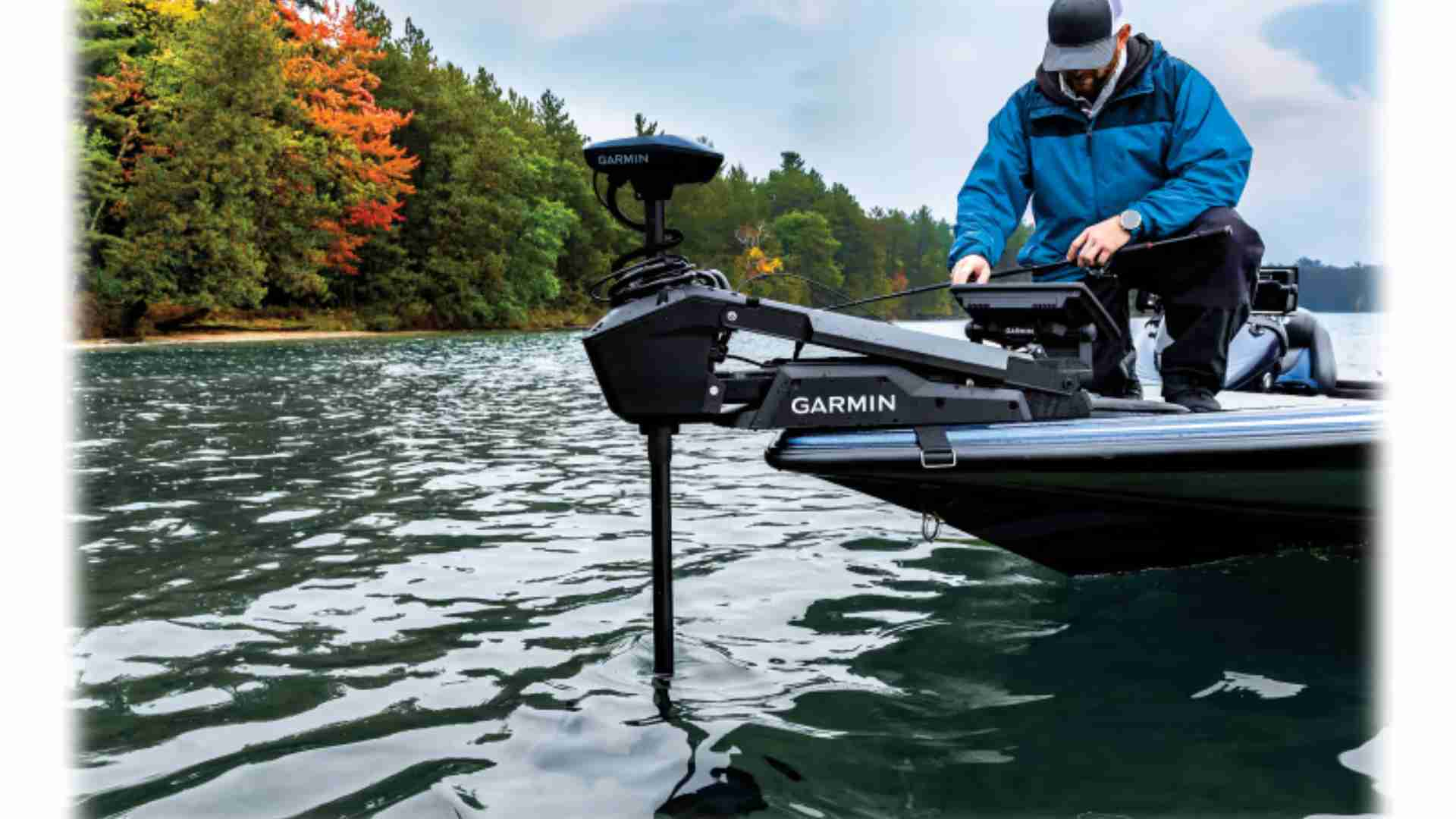How to Use a Trolling Motor
Master your trolling motor with our guide on types, setup, operation, and tips for efficient fishing and boat control.
Trolling motors are essential tools for anglers and boaters, offering precise control and quiet operation for fishing and navigating tight spaces. Unlike outboard engines, trolling motors prioritize finesse over speed, making them ideal for positioning a boat with accuracy. Whether you’re casting in a serene lake or shuttling passengers on a small vessel, mastering a trolling motor can transform your boating experience. This guide covers everything you need to know about trolling motors: their types, installation, operation, and advanced tips for efficiency, including solutions for high-demand scenarios like running a boat taxi service. We’ll also explore battery setups and accessories to maximize performance.
What Is a Trolling Motor?
A trolling motor is a compact, electric (or occasionally gas-powered) motor designed for low-speed maneuvering. Mounted on the bow or transom of a boat, it provides quiet propulsion and precise control, making it indispensable for fishing, navigating shallow waters, or holding position in wind and current. Most trolling motors run on deep-cycle batteries, typically 12V, 24V, or 36V, and offer various control methods like hand tillers, foot pedals, or digital remotes. They are popular in both freshwater and saltwater, with models tailored to different boat sizes and boating styles.
Why Use a Trolling Motor?
- Precision Control: Allows fine adjustments to position your boat exactly where you want it.
- Stealth: Operates quietly, minimizing disturbance to fish or wildlife.
- Versatility: Suitable for fishing, leisure boating, or specialized tasks like a boat taxi service.
- Ease of Use: Beginner-friendly, with intuitive controls for steering and speed.
Types of Trolling Motors
Choosing the right trolling motor depends on your boat, usage, and preferences. Below are the main types, categorized by mounting location and control style.
1. Bow-Mounted Trolling Motors
Bow-mounted motors are installed at the front of the boat, pulling it through the water for superior maneuverability. They excel in windy conditions or strong currents, making them a favorite among serious anglers.
- Pros: Excellent control, ideal for precise casting, compatible with foot pedals or digital controls.
- Cons: Requires a flat deck for mounting, more complex installation.
- Best For: Bass boats, larger vessels, or anglers needing pinpoint accuracy.
2. Transom-Mounted Trolling Motors
Mounted at the stern, transom motors push the boat and are simpler to install and operate. They’re cost-effective and ideal for smaller boats or casual use.
- Pros: Easy to install, budget-friendly, typically uses hand tiller controls.
- Cons: Less precise than bow mounts, especially in rough conditions.
- Best For: Jon boats, kayaks, or beginners.
3. Tiller-Steer Trolling Motors
Tiller-steer motors use a handle for manual steering and throttle control, commonly found on transom-mounted models but also available on some bow mounts.
- Pros: Intuitive, responsive, no additional control systems needed.
- Cons: Requires hands-on operation, limiting multitasking.
- Best For: Boaters who prefer direct control or have smaller setups.
4. Foot-Pedal-Controlled Trolling Motors
Foot pedals allow hands-free operation, letting anglers steer and adjust speed while casting or reeling. They’re typically paired with bow-mounted motors.
- Pros: Frees hands for fishing, ergonomic for long sessions.
- Cons: Requires practice to master pedal sensitivity.
- Best For: Solo anglers or those needing multitasking capabilities.
5. Digitally Controlled Trolling Motors
Advanced models feature GPS, cruise control, and wireless remotes. Technologies like Minn Kota’s Spot-Lock hold your position automatically, while route-tracking follows pre-set paths.
- Pros: High precision, minimal manual input, ideal for open water.
- Cons: Higher cost, steeper learning curve for tech features.
- Best For: Tech-savvy users, large boats, or offshore fishing.
| Type | Mounting | Control Method | Best For | Price Range |
|---|---|---|---|---|
| Bow-Mounted | Front | Foot, Digital | Precision fishing, larger boats | $500–$2,500 |
| Transom-Mounted | Rear | Tiller, Manual | Small boats, casual use | $150–$800 |
| Tiller-Steer | Either | Hand Tiller | Direct control, budget setups | $150–$600 |
| Foot-Pedal-Controlled | Bow | Foot Pedal | Hands-free fishing | $600–$2,000 |
| Digitally Controlled | Bow | Remote, GPS | Tech-savvy users, open water | $1,000–$3,500 |
Choosing the Right Trolling Motor
Selecting a trolling motor involves matching its specifications to your boat and needs. Key factors include:
- Boat Size and Weight: Calculate your boat’s total weight (including gear and passengers). A general rule is 5 pounds of thrust per 200 pounds of weight. For example, a 2,000-pound boat needs at least 50 pounds of thrust.
- Usage: Fishing in calm lakes requires less power than navigating windy rivers or coastal waters.
- Control Preference: Choose tiller, foot pedal, or digital based on your comfort and multitasking needs.
- Shaft Length: Ensure the propeller stays submerged in rough water. Longer shafts (48–60 inches) suit larger boats or choppy conditions.
- Voltage: 12V for small boats, 24V or 36V for larger ones or extended use.
Popular Trolling Motor Brands and Models
| Brand | Model | Thrust (lbs) | Voltage | Key Features | Price (USD) |
|---|---|---|---|---|---|
| Minn Kota | Ultrex | 80–112 | 24V/36V | Spot-Lock, Power Steering | $2,000–$2,500 |
| Minn Kota | PowerDrive | 55–70 | 12V/24V | i-Pilot GPS, Deploy Assist | $800–$1,500 |
| MotorGuide | Xi5 | 55–105 | 12V/24V/36V | Wireless Remote, Pinpoint GPS | $1,000–$2,200 |
| Lowrance | Ghost | 97–120 | 24V/36V | Sonar Integration, Quiet Operation | $2,000–$3,500 |
Installing a Trolling Motor
Proper installation ensures safety and performance. Follow these steps:
- Select Mounting Location: Choose bow or transom based on your motor and boat type. Ensure a flat, stable surface.
- Secure the Bracket: Use the manufacturer’s hardware to mount the bracket. Check for levelness and tightness to prevent vibration.
- Connect the Battery: Use marine-grade wiring and a circuit breaker (e.g., 50A for 12V, 60A for 24V/36V). Connect batteries in series for 24V/36V systems (positive to negative, then to motor).
- Test Before Launch: Power on the motor, check steering, and ensure the propeller clears the hull.
- Adjust Shaft Depth: Set the propeller 12–18 inches below the waterline to avoid cavitation.
Tip: Lithium batteries (e.g., Ionic Lithium) are lighter and charge faster than lead-acid. A 24V 100Ah lithium battery ($800–$1,200) can replace multiple 12V lead-acid batteries, saving space and weight.
Operating a Trolling Motor
Using a trolling motor is straightforward with practice. Here’s a step-by-step guide:
1. Deploying the Motor
- Bow-Mounted: Pull the cable or handle to release the locking pin, then lower the motor into the water. Some models have hydraulic assist for easier deployment.
- Transom-Mounted: Lower the motor using the clamp or bracket, ensuring the propeller is fully submerged.
- Common Mistake: Forgetting to turn on the master power switch or speed dial. Check both before assuming a malfunction.
2. Steering and Speed Control
- Tiller: Twist the handle for speed and turn it for direction. Practice in open water to gauge responsiveness.
- Foot Pedal: Press forward (toe down) to turn right, backward (heel down) to turn left. Adjust speed with pedal pressure.
- Digital/Remote: Use the remote or app to set speed, direction, or GPS features like Spot-Lock.
- Tip: Start at low speeds (20–30% throttle) to conserve battery and improve control.
3. Navigating Tight or Shallow Areas
- Use short bursts of power to minimize noise and avoid spooking fish.
- Adjust shaft depth to keep the propeller submerged but clear of the bottom or weeds.
- Lift the motor when approaching hazards like rocks or stumps.
4. Stowing the Motor
- Power off the motor, then pull the cable to release the locking pin and raise it to the flat, travel position. Ensure the pin locks securely.

Tips for Efficient Trolling Motor Use
To maximize performance and battery life, follow these tips:
- Go Slow: Running at 70% throttle uses half the power of full throttle, extending runtime. For example, a 12V 55lb thrust motor at full speed draws ~50A, draining a 100Ah lithium battery in 2 hours. At 70%, it lasts ~4 hours.
- Monitor Battery Levels: Use a battery meter or Bluetooth-enabled battery (e.g., Ionic Lithium) to track charge in real-time.
- Clear Debris: Remove weeds or fishing line from the propeller to prevent overheating or reduced efficiency.
- Rinse After Saltwater: Prevent corrosion by rinsing with fresh water after use.
- Use GPS Features: Spot-Lock and route-tracking reduce manual adjustments, saving power and effort.
- Pull Up Outboard: Reduce drag by raising your main engine, easing the trolling motor’s workload.
Multitasking While Fishing
For anglers like those using a Bass Tracker, multitasking (e.g., changing lures while steering) can be challenging. Here’s how to manage:
- Organize Your Deck: Install a small tackle tray or console near the foot pedal for lures, pliers, and hooks. Magnetic trays ($15–$30) keep tools secure.
- Rod Management: Use a rod holder or lean the rod against a seat with the butt on the deck and tip elevated. Avoid placing it between your legs while standing on the pedal.
- Wearable Gear: Use a fishing vest or belt with pouches ($20–$50) to hold tools and lures, keeping your hands free.
- Practice Foot Control: Stand lightly on the pedal, using subtle toe/heel movements to adjust direction while working with lures or hooks.
Energy-Efficient Trolling Motor Setup for High-Demand Use
For scenarios like running a boat taxi service on a jon boat with an electric trolling motor (e.g., 12V 62lb thrust), efficiency and runtime are critical. Overheating and battery depletion, as experienced with melting lead-acid batteries, indicate overloading and improper setup. Here’s how to create an energy-efficient system for 8+ hours of consistent use:
1. Upgrade to Lithium Batteries
Lead-acid batteries (e.g., marine deep-cycle) can only be discharged to ~50% without damage, providing half their rated capacity. Lithium batteries (LiFePO4) can be discharged to ~5%, offering nearly full capacity.
- Recommendation: Use 2–3 12V 100Ah LiFePO4 batteries (e.g., Dakota Lithium, $800–$1,000 each) connected in parallel for a 12V system. This provides 200–300Ah, doubling runtime compared to lead-acid.
- Weight Savings: Three 100Ah lithium batteries (
90 lbs total) replace 4–6 lead-acid batteries (200–300 lbs). - Runtime Example: A 62lb thrust motor at full throttle draws ~60A. With 200Ah lithium, you get ~3.3 hours at full speed or ~6–7 hours at 70% throttle.
2. Switch to a 24V or 36V Motor
Higher-voltage motors (24V or 36V) are more efficient, drawing fewer amps for the same power output (Watts = Volts × Amps). A 24V 80lb thrust motor uses ~40A at full throttle, compared to ~60A for a 12V 62lb motor.
- Recommendation: Upgrade to a 24V Minn Kota PowerDrive ($800–$1,500) with a 24V 100Ah lithium battery ($1,200–$1,800).
- Benefit: Longer runtime and thinner wiring, reducing heat and resistance.
3. Add Solar Charging (Optional)
For extended trips, a solar panel can trickle-charge batteries. A 100W marine-grade solar panel ($100–$200) with a charge controller ($50–$100) can add 5–10Ah per hour in direct sunlight.
- Setup: Connect the panel to a spare battery via a controller, swapping it with the active battery as needed.
- Limitation: Solar is supplemental and less effective at night or in cloudy conditions.
4. Use a Generator (if Allowed)
A quiet generator like the Honda EU1000i ($900–$1,100) paired with a 50A charger ($100–$200) can charge batteries on the go. Check local regulations, as some lakes ban gas-powered devices.
- Setup: Run the generator on shore or a separate vessel, charging one battery while another powers the motor.
- Benefit: Indefinite runtime with proper battery rotation.
5. Optimize Operation
- Reduce Throttle: Operate at 50–70% speed to cut power consumption by up to 50%.
- Minimize Load: Limit passengers or gear to reduce boat weight, easing motor strain.
- Use a Pontoon Boat: If budget allows, switch to a pontoon for better efficiency and capacity, reducing trips.
| Setup | Components | Cost (USD) | Runtime (Full Throttle) | Pros |
|---|---|---|---|---|
| 12V Lithium (200Ah) | 2x 12V 100Ah LiFePO4, 12V 62lb motor | $1,600–$2,000 | ~3.3 hours | Lightweight, affordable |
| 24V Lithium (100Ah) | 1x 24V 100Ah LiFePO4, 24V 80lb motor | $2,000–$3,000 | ~2.5 hours | More efficient, less wiring |
| Solar + Lithium | 200Ah LiFePO4, 100W solar panel, charger | $1,800–$2,300 | ~4–5 hours (with sun) | Sustainable, supplemental power |
| Generator + Lithium | 200Ah LiFePO4, Honda EU1000i, 50A charger | $2,600–$3,300 | Indefinite (with rotation) | Reliable, long-term solution |
Must-Have Accessories
Enhance your trolling motor setup with these accessories:
- Quick-Release Bracket ($50–$150): Simplifies motor removal for storage or transport.
- Stabilizer Bar ($30–$100): Secures the motor during towing or rough water.
- Battery Monitor ($20–$50): Tracks voltage and capacity to prevent unexpected depletion.
- Onboard Charger ($100–$300): Ensures batteries are fully charged between trips. Look for float-charging models.
Troubleshooting Common Issues
- Motor Won’t Start: Check the master power switch and speed dial. Ensure battery connections are secure.
- Overheating Batteries: Switch to lithium batteries and avoid full-throttle operation for extended periods.
- Weed Fouling: Lift the motor and clear debris manually to prevent strain or damage.
- Short Runtime: Upgrade to higher-capacity lithium batteries or a higher-voltage motor.
Conclusion
A trolling motor is more than just a tool—it’s a game-changer for anglers and boaters. From precise fishing to efficient boat taxi services, it offers unmatched control and stealth. By choosing the right motor, setting it up correctly, and optimizing your battery system, you can enjoy longer, smoother outings. For high-demand scenarios, lithium batteries and higher-voltage motors are key to avoiding issues like overheating or short runtimes. Practice your technique, invest in quality gear, and you’ll master your trolling motor in no time.
Happy Boating!
Share How to Use a Trolling Motor with your friends and leave a comment below with your thoughts.
Read How to Dock a Personal Watercraft (PWC): Guide until we meet in the next article.






